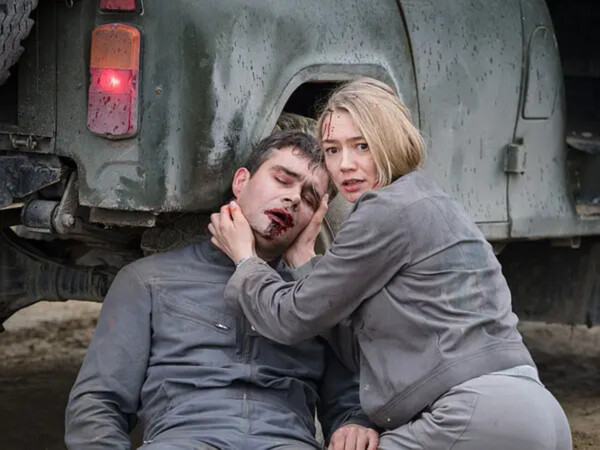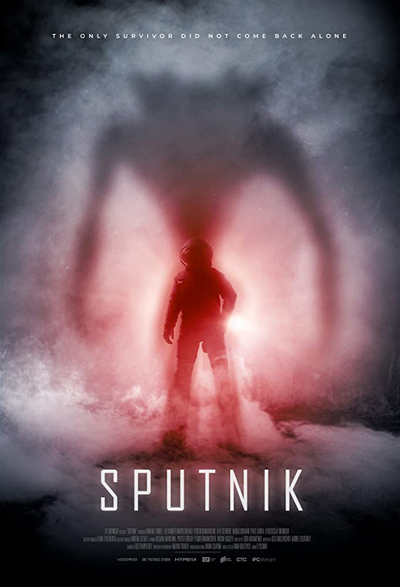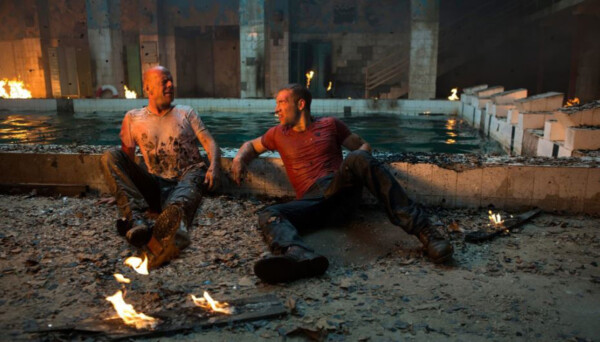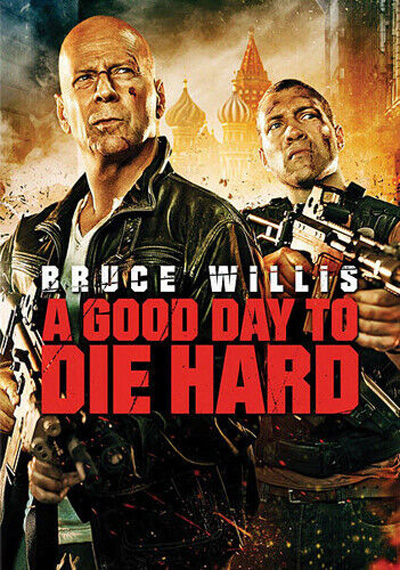America has been surrendered to the Russians
Our new Secretary of Defense, that drunkard, Comrade Hegseth, has decided that Russia no longer poses a threat to the United States and has ordered a cessation of both offensive and defensive cyber security activities aimed at Moscow.
We’re such good friends with Russia now, despite the fact that our favorite Russian oligarch, Polonium Putin, ordered his cyber forces to interfere with the 2016 U.S. presidential election on a seismic scale, and then again in 2020, and yet again in 2024. And they’re still doing it. Just recently, when the Republicans passed that sorry excuse for a budget, thousands of new accounts showed up on social media, accounts with millions of followers, claiming the Republicans had passed a new budget that contained tax breaks on tips, overtime and Social Security, and the horrible Democrats voted against it.
Those social media accounts were fake. Those millions of followers, bought and paid for. There were no provisions for tax breaks on tips, overtime and Social Security in the GOP budget.
It was all a lie.
We’re such good friends with Russia now, despite the fact that Polonium Putin’s political adversaries have an odd way of falling off balconies or out of windows in high-rises, or drinking radioactive tea and unaliving themselves.
And we’re such good friends with Russia now despite Polonium Putin hurling his army, navy and air forces against Ukraine in an illegal invasion, unaliving tens of thousands of innocent people; targeting schools, churches and hospitals with his missiles and bombs; kidnapping tens of thousands of Ukrainian children to diminish his depleted ranks; and raping thousands of Ukrainian women, children, even men.
Tell me something.
Why haven’t these people been arrested for treason? Because that’s clearly what’s happening here. They’re rendering our nation defenseless against its primary enemy – not the Russian people, but the corrupt and criminal Russian leadership.
Russia said the other day that America’s worldview now aligns with Russia’s worldview. If that ain’t treason, I don’t know what is.
And we owe it all to Donald Trump and his alcoholic lapdog Comrade Hegseth.
SMH.
About the author:
Del Stone Jr. is a professional fiction writer. He is known primarily for his work in the contemporary dark fiction field, but has also published science fiction and contemporary fantasy. Stone’s stories, poetry and scripts have appeared in publications such as Amazing Stories, Eldritch Tales, and Bantam-Spectra’s Full Spectrum. His short fiction has been published in The Year’s Best Horror Stories XXII; Alfred Hitchcock’s Mystery Magazine; the Pocket Books anthology More Phobias; the Barnes & Noble anthologies 100 Wicked Little Witch Stories, Horrors! 365 Scary Stories, and 100 Astounding Little Alien Stories; the HWA anthology Psychos; and other short fiction venues, like Blood Muse, Live Without a Net, Zombiesque and Sex Macabre. Stone’s comic book debut was in the Clive Barker series of books, Hellraiser, published by Marvel/Epic and reprinted in The Best of Hellraiser anthology. He has also published stories in Penthouse Comix, and worked with artist Dave Dorman on many projects, including the illustrated novella “Roadkill,” a short story for the Andrew Vachss anthology Underground from Dark Horse, an ashcan titled “December” for Hero Illustrated, and several of Dorman’s Wasted Lands novellas and comics, such as Rail from Image and “The Uninvited.” Stone’s novel, Dead Heat, won the 1996 International Horror Guild’s award for best first novel and was a runner-up for the Bram Stoker Award. Stone has also been a finalist for the IHG award for short fiction, the British Fantasy Award for best novella, and a semifinalist for the Nebula and Writers of the Future awards. His stories have appeared in anthologies that have won the Bram Stoker Award and the World Fantasy Award. Two of his works were optioned for film, the novella “Black Tide” and short story “Crisis Line.”
Stone recently retired after a 41-year career in journalism. He won numerous awards for his work, and in 1986 was named Florida’s best columnist in his circulation division by the Florida Society of Newspaper Editors. In 2001 he received an honorable mention from the National Lesbian and Gay Journalists Association for his essay “When Freedom of Speech Ends” and in 2003 he was voted Best of the Best in the category of columnists by Emerald Coast Magazine. He participated in book signings and awareness campaigns, and was a guest on local television and radio programs.
As an addendum, Stone is single, kills tomatoes and morning glories with ruthless efficiency, once tied the stem of a cocktail cherry in a knot with his tongue, and carries a permanent scar on his chest after having been shot with a paintball gun. He’s in his 60s as of this writing but doesn’t look a day over 94.
Contact Del at [email protected]. He is also on Facebook, twitter, Pinterest, tumblr, TikTok, and Instagram. Visit his website at delstonejr.com .

Image courtesy of Sony Pictures.
“Sputnik” Starring Oksana Akinshina, Fyodor Bondarchuk, Pyotr Fyodorov, Anton Vasiliev and others. Directed by Egor Abramenko. Music by Oleg Karpachev. 113 minutes. Amazon Prime. Should be rated R for at least gore.
Mladen’s take
If the commie pinko fascist reds of the Putin regime savaging Russia today ever build an economy and arsenal like a few of that luckless nation’s citizens built the film “Sputnik,” the U.S. is in trouble. “Sputnik” is Grade A sci-fi horror nicely balanced with the correct doses of well acted storytelling, a world class score, and sophisticated, non-overbearing CGI. The movie is in Russian, so it’s captioned. Inevitably, something must’ve been lost in translation to English, but don’t let that discourage you from seeing the film. The captioning is good enough to convey its neat ideas and the character of the characters.
The Soviet Union is only seven years from disintegrating when this movie takes place. It’s 1983. It’s still the first Cold War. And, the Politburo needs a nationalistic win to boost the country’s sagging morale. The U.S.S.R. war in Afghanistan ain’t going well. Consumer goods are in short supply, unless you’re privileged. The Communist Party is going through leaders like Donald Moron Trump goes through unqualified cabinet secretaries. So, the addled Soviet Union turns to one of its few semi successes, space travel, for a taste of accomplishment. Two of its cosmonauts go into low-earth orbit, but three passengers return.
What unfolds next will have movie reviewers inevitably drawing comparisons between “Sputnik” and one of the two greatest sci-fi horror films ever, “Alien.” Labeling “Sputnik” an “Alien” derivative would be a false equivalency, however. It’d be like bashing “Alien” for mimicking “Invasion of the Body Snatchers.” There’s nothing new in moviedom about films creature featuring critters living inside us. “Invasion” with Donald Sutherland is a terrific movie, as is “Alien” with Sigourney Weaver. In “Sputnik,” Oksana Akinshina is top notch as her character, neuropsychiatrist Tatyana Klimova. Amiably menacing Fyodor Bondarchuk as Colonel Semiradov, charming survivor cosmonaut Konstantin Veshnyakov played by Pyotr Fyodorov, and Anton Vasiliev donning the role of ambitious but riven Dr. Yan Rigel are excellent, too. Even the movie’s title is well executed. “Sputnik” means “fellow traveler” or “companion,” but, generally, in a friendly way. That’s not what we get here.
“Sputnik” is one of the finest sci-fi movies I’ve seen in years. It’s better than “Life,” “Annihilation,” “High Life” or “Ad Astra.” It approaches “Europa Report” and “Arrival” in quality in terms of applying science to decipher what’s occurring, as well as acting and atmosphere. As with “Arrival,” for example, there’s a strong and intelligent female as the principal player in “Sputnik.” There’s tension and a twist or two as the characters develop. There’s realism. In “Arrival” the militaries of the world take the lead in trying to understand the aliens that have parked ships above certain spots on Earth. In “Sputnik,” the Soviet army’s Semiradov is trying to weaponize the trilling, cute-ish, slimy symbiont emerging nightly from the esophagus of Veshnyakov to feed. Pay attention to that part, the feeding. The food the alien needs is produced by a human’s endocrine subsystem. The way the creature ensures that happens is one of the movie’s provocative and original ideas. Loved it.
Come to think of it, there’s one other parallel between “Arrival” and “Sputnik.” This one falls into the category of irritating with a caveat. Both films have annoying time spanning flashes that involve children. Where that was needed to tell the story in “Arrival,” it was not needed to tell the story in “Sputnik.” But, that’s a minor quibble.
Disregard Del’s take, if he even suggests in his introduction that the film stinks. To dislike “Sputnik” is to demonstrate short-circuited sensory response, poor reasoning, a flawed recollection of movie history, moral turpitude and full-on soullessness. Watch “Sputnik.” It’s so good that I’m hoping to buy the film on Blu-ray. This way, when some National Security Agency trained, white hat hacker blows up the internet in anger after losing his Luke Skywalker figurine still in the original package that he put up as collateral to speculate on cryptocurrency futures, I’ll be able to watch this film again and again without worrying about access to a streaming service.

Del’s take
Man, what a stinker!
(I am picturing Mladen frothing at the mouth, his eyes goggling out like one of those squishy rubber chickens.)
On second thought, mark your calendars, folks, because today is one of those rare occasions – snow falling on Labor Day, the Florida unemployment compensation site actually working – when Mladen and I agree on something. “Sputnik” is a splendid film, the kind once made in America before the MBAs took over Hollywood.
“Sputnik” is a period piece, set in that happy time frame – for the United States, anyway – of the 1980s when MTV played music videos, imported beer became all the rage and many of us had waistline measurements that did not begin with the number 4. Except in “Sputnik” we are mired in the drab, run-down Soviet Union where people seem drab and run-down themselves, perhaps wearied by the relentless and dispiriting reality of communism. Neuropsychiatrist Tatyana Klimova, who has lost her job because of her unorthodox methods, has been summoned to a remote military facility to examine one of two recently returned cosmonauts – the other is deceased – who is experiencing amnesia. Except there’s a complication and I like the way Mladen put it: “Two of its cosmonauts go into low-earth orbit, but three passengers return.”
That’s a creepy premise and the movie delivers on creep, offering start-to-finish tension that lets up only briefly to set the stage of an original and surprising finish, one I’m surprised Mladen didn’t crab about seeing as how it’s laden with sentimentality.
Mladen is right. “Sputnik” has drawn comparisons to “Alien,” but the world of fiction, be it print or moving picture, provides a surfeit of tales about small groups confined to small spaces facing a singular threat – the Agatha Christie novel “And Then There Were None,” the lighthouse couple in “Day of the Triffids,” and even the happy gang of “The Walking Dead” to name a few. “Sputnik” may tread familiar ground but it strikes its own path.
It is no coincidence a movie about a man afflicted with a destructive internal force and the woman determined to save him takes place in a creaky totalitarian regime that is rotting from the inside, and Americans should pay heed to the cautionary aspects of the movie, which equally reflect the intellectual and moral rot eating the heart out of this country. That comment may not sit well with the Sieg Heil crowd that seems to be running Washington these days, but you know what? They’ll get over it.
The Russians and Chinese are improving their movie-making skills – “Winter of the Dead” and “The Wandering Earth” are two examples – and “Sputnik” continues that trend. I don’t draw any political conclusions from this fact – I think the improvements have come in spite of their no-fun, no-inspiration political and economic systems. Like Klimova of “Sputnik,” some moviemakers in those repressed states have risen above their hopeless surroundings to find some measure of success. Let’s hope that trend is just the beginning.
I give “Sputnik” an A.
There, Comrade Mladen. Are you happy now?
Mladen Rudman is a former journalist and technical writer. Del Stone Jr. is a former journalist and author.

Image courtesy of 20th Century Studios.
—
“A Good Day to Die Hard” Starring Bruce Willis, Jai Courtney, Sebastian Koch. Directed by John Moore. 97 minutes. Rated R.
Mladen’s take
Let’s do the numbers. The numbers of objects destroyed in recently released “A Good Day to Die Hard,” starring Bruce Willis as berserk New York cop John McClane.
I estimate 3,000 acres of windows, 83 cars and trucks, and at least three dozen people were smashed or blown to bits. And that’s just in the first 15 minutes of this film, the fifth in the “Die Hard” franchise.
Mayhem is what I expect when Bruce Willis reprises his McClane character but the action must be sensible. The first four “Die Hards” possessed useful violence. “A Good Day,” which has McClane and his CIA agent son administering punishment to Russians in Moscow and Chernobyl, was a blur of destruction.
Between flying cars and discovery of a stash of weapons-grade uranium, the McClanes move toward repairing their broken relationship. Apparently, there’s nothing like blood, brain splatter and radioactivity to bring a father and son closer.
R-rated “A Good Day” is almost completely flawed. Its counter double-cross is as predictable as my son’s reaction when I tell him to do a chore.
McClane’s son, Jack, is played by Jai Courtney. His biceps are bigger than my head but Courtney’s physique and good looks can’t compensate for his uninspired performance. Jack the CIA man has no charisma. Jack isn’t particularly likeable. Jack is a dolt whose aged father has to rescue him again and again.
The movie’s weakness could be attributed to poor screenwriting or the director’s over-reliance on action, but I fault Willis.
I was bored by the movie because Willis was bored by the movie. His one-liners were delivered without flourish or joy or that subtle exclamation that Willis always managed in past “Die Hards” when he survived the unsurvivable.
Recall the momentous and frenetic scene near the end of the fourth installment, “Live Free or Die Hard.”
McClane is driving a tractor-trailer on an elevated interstate. His nemesis, a computer hacking nut job, sics a Marine Corps F-35 on poor McClane.
The Lightning II targets McClane with missiles, blowing away pilings that collapse part of the interstate.
Next comes the cannon.
Shells blow holes in the tractor-trailer. It’s almost tipped on its side but McClane presses on.
He ends up on a piece of inclined interstate as the truck burns. More cannon fire. McClane rolls out of the truck and falls onto the tail section of the F-35.
Then, a piece of debris is swallowed by the fighter’s hover fan and it explodes. Out of control, the F-35 begins to rotate, flinging McClane onto another piece of battle-damaged, slanting highway.
The battered cop slides down the gritty road to land on his feet. As McClane limps from the wreckage – truck, aircraft and roadway all smoking – he looks back, grins and says, “Whew.”
Perfect. Absolutely perfect. Perfectly executed. Perfectly understated. Perfectly unbelievable and perfectly plausible simultaneously.
None of that happens in “A Good Day.” It’s droll and the movie’s special effects come nowhere near to rescuing it. After this “Die Hard,” the franchise should have no trouble dying easily.

Del’s take
One night in 1988 I visited a local movie theater to catch a movie called “Die Hard.” I had few expectations – the movie starred a television actor whose work seemed incompatible with the badass requirements of an action hero.
I came away with my mind officially blown. “Die Hard” was a classic. Every aspect – acting, script, pacing, even the score – was first rate. I saw it again and when the video came out, I happily sprang $25 for the VHS tape.
What a difference 25 years makes.
“A Good Day to Die Hard” is a ridiculous farce – not so much an action movie as a disaster flick, and the disaster is the movie itself. Fans of the original movie and its scrappy protagonist, John McClane, will be shaking their heads and declaring the franchise dead. Another dud like “A Good Day” will cement that demise.
The shark has definitely jumped Nakatomi Plaza.
Mladen has already filled you in with the plot details. I’ll add the first 10 minutes of the movie are boring beyond description, and make little sense. When the action commences it is a pointless destructionfest with every car east of the former Iron Curtain smashed beyond comprehension, and no attempt made to elaborate on the overall direction of the movie. I found myself wondering if I were watching a POV rendition of a video game player’s chapter of “Grand Theft Auto.”
Worse, Bruce Willis’ character, John McClane, is reduced from a hapless but insurmountable everyman whom trouble seems to find, into a mumbling accessory whose inane and humorless pronouncements contradict the film’s subtext that while he is old, McClane still has much to offer the world of crime-fighting.
Next come the awful cliches – McClane is estranged from his son yet flies halfway across the world to rescue him from a Russian jail where he is being held on suspicion of attempted murder. The two meet amidst a chaotic situation and spend the next hour snipping at one another, the son constantly reminding the dad of how his absence ruined the son’s life until finally, near the film’s climax, the two reach a kind of rapprochement that you just know will have them walking off into the smoky, debris-filled sunset shoulder to shoulder, if not arm in arm, as the movie limps to its closing curtain.
Missing is the sharp-witted detective with the snappy comebacks whom every bad guy underestimates, replaced by a grumpy pensioner who ceaselessly complains his vacation has been spoiled by a thankless child. “A Good Day” lacks the single most important ingredient of a “Die Hard” film – fun.
Ironically, on the same day I saw “A Good Day” I also watched “Skyfall,” the latest James Bond installment. It deals with a similar theme, that of an aging crime fighter who may have lived beyond his usefulness. But “Skyfall” is Mozart beside “A Good Day’s” bubblegum pop. Smartly written and skillfully directed, “Skyfall” proves there’s hope for the “Die Hard” franchise.
If Sam Mendes decides to take on another failing action hero property, I can only expect John McClane to gleefully declare, “Yippy kay yay, …”
Mladen Rudman is a former journalist and public information officer. Del Stone Jr. is a former journalist and author.